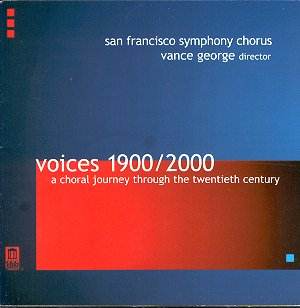 Composer: Dmitri Shostakovich (1906-1975)
Composer: Dmitri Shostakovich (1906-1975)
Works: Symphony No. 6 in E Minor, Symphony No. 10 in E Minor
Performers: Dallas Symphony Orchestra, conducted by Andrew Litton
Recording Dates: Live, September 21-24, November 30, and December 1-2, 2000
Label: Delos DE 3283
Duration: 82:39 (2 discs)
Special Price: Crotchet £11.99, Amazon UK/US
In this latest installment of Andrew Litton’s ongoing Shostakovich cycle with the Dallas Symphony Orchestra, we are presented with an ambitious pairing of Symphony No. 6 and Symphony No. 10, both works resonating with the complex emotional and historical landscapes of Soviet Russia. Litton’s conducting, while at times inviting scrutiny, ultimately offers a reading of these symphonies that balances clarity, precision, and a nuanced understanding of Shostakovich’s stylistic intricacies.
The Tenth Symphony, widely regarded as one of Shostakovich’s most significant orchestral achievements, emerges with a formidable presence under Litton’s baton. The first movement, marked Allegro, is a sprawling canvas of brooding intensity, evoking the oppressive weight of Stalin’s regime. While some interpretations—most notably those by Mravinsky and Mitropoulos—have been characterized by raw power and visceral energy, Litton’s approach opts for a more controlled, contemplative unfolding of the thematic material. The strings, particularly well-integrated in the recording, deliver the long, sinuous lines with commendable depth, though one cannot help but miss the dramatic sweep found in more fervent renditions. The pivotal climax around the 10:00 mark, while expertly executed, lacks the cataclysmic force that has defined other interpretations.
In contrast, the second movement, marked Allegro, bursts forth with a savage, incisive energy that encapsulates Shostakovich’s biting satire of the oppressive regime. Here, Litton excels, balancing precision with the ferocity inherent in the music, yielding a visceral portrait of “Old Joe” that raises the hairs on the listener’s neck. This movement’s punchy string chords and the subsequent cacophony of winds and brass are delivered with a razor-sharp clarity that is a testament to both the orchestra’s skill and the recording’s exceptional engineering.
The third movement, an Allegretto, requires a delicate touch to maintain its ironic undertones without veering into mere frivolity. Litton navigates this precarious balance skillfully, allowing the tempo to ebb and flow, enhancing the movement’s sardonic quality. The thematic recall of the first movement is handled with an astute understanding of its duality, where nostalgia intertwines with a sense of foreboding.
The finale, a complex tapestry of jubilation and underlying pathos, dances between the jubilant and the tragic, encapsulating the ambiguous emotional landscape of post-Stalin Russia. Here, Litton’s interpretation skates on the surface of the music’s deeper currents, leaving one longing for a more profound exploration of the emotional turmoil it represents. Yet, the orchestral playing remains robust, with woodwinds shining in their eloquent contributions, supported by a well-blended string backdrop.
Turning to the Symphony No. 6, one encounters a different set of interpretative challenges. The first movement, marked Largo, unfolds with an almost elegiac gravitas, yet Litton’s reading—while technically proficient—lacks the necessary weight to convey the profound despair embedded within. The fluidity of his tempo seems to oversimplify Shostakovich’s complex layering of emotions, which has been more effectively rendered in recordings by conductors such as Previn and Reiner, whose interpretations delve deeper into the work’s inherent darkness.
In the subsequent two movements, the Dallas musicians shine with their spirited execution and agility. The quick tempos suit the sardonic humor of these sections, and Litton’s pace allows for a delightful interplay of wit and charm. The orchestra’s unified precision in these movements solidifies their command over the lighter, yet equally complex, aspects of Shostakovich’s writing.
Recording quality plays a significant role in the overall impact of this release. Delos’s engineers have captured the orchestra’s sound with remarkable clarity and depth, creating a listening experience that resonates with both warmth and definition. The absence of distracting audience noise during these live performances further enhances the immersion, allowing the listener to engage fully with the intricate textures of the orchestral fabric.
In conclusion, while Andrew Litton’s interpretations of Shostakovich’s symphonies present a commendable effort marked by technical proficiency and clarity, they occasionally fall short of the emotional and dramatic depth found in the finest recordings of these masterpieces. The Tenth Symphony stands as a strong testament to the orchestra’s capabilities, yet one feels a yearning for the raw energy and profound introspection of its predecessors. The Sixth Symphony, though executed well, does not resonate with the same lasting impact. Thus, while this release will undoubtedly appeal to Shostakovich aficionados and those seeking high-quality recordings, potential listeners should approach with an understanding of its interpretative nuances and historical context.



